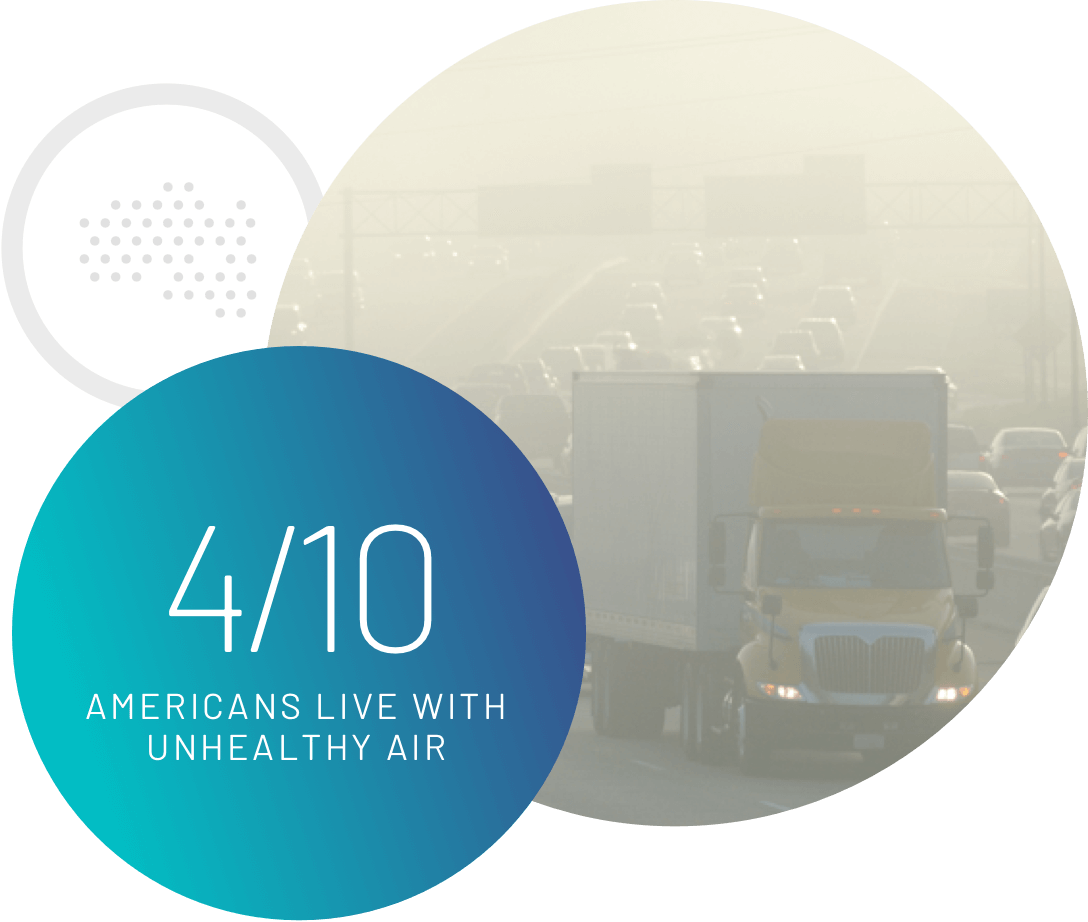
Breathe cleaner air right now.
NGVs offer the fastest, most cost-effective path to reducing heavy-duty vehicle emissions
THE PROBLEM
THE SOURCE
Heavy- and medium-duty vehicles are the No. 1 source of smog
While HDVs total 7 percent of all vehicles on America’s roadways, they account for upwards of 50 percent of all smog-precursor emissions and 20 percent of all transportation-related greenhouse gases (GHGs).
Heavy duty vehicles (HDVs) account for upwards of 50 percent of America’s smog-precursor emissions.
Source: Game Changer Technical White Paper, Gladstein, Neandross & Associates, May 2016
LEADING SOURCES OF URBAN EMISSIONS
WHAT ARE HDVs?

43%
Heavy-duty trucks not certified to current U.S. EPA NOx emission standard

57%
57% Heavy-duty trucks certified to current U.S. EPA NOx emission standard
Heavy-duty vehicles – the fastest growing segment of U.S. transportation in terms of energy use and emissions – include:
Short-Haul Trucks
Long-Haul Trucks
Refuse Trucks
School Buses
Transit Buses
EMISSIONS GETTING STRICTER
Natural gas engines are certified to the aggressive CARB Model Year 2024 standard without using credits.
Source: California Air Resources Board
WHAT ARE HDVs?
Heavy-duty vehicles – the fastest growing segment of U.S. transportation in terms of energy use and emissions – include: short-haul trucks, long-haul trucks, refuse trucks, school buses and transit buses.
THE SOLUTION
Replace diesel HDVs & MDVs with Natural Gas Vehicles
NGVs deliver the largest and most cost-effective NOx emissions reductions
In-use testing results of heavy-duty trucks in port applications finds that diesel emits up to 5-times more NOx than certification levels. Natural gas certification levels for NOx are already 10x less than diesel
NGV emissions during deputy cycles (slower speeds, idling, stop and go traffic) decrease while diesel deputy cycle emissions increase.
FUEL
Natural Gas and Renewable Natural Gas provide CO2 and greenhouse gas emission reductions compared to diesel:

* Dependent upon RNG source. Reductions of 45% (landfill) up to 582% (dairy) compared to diesel; values based on CARB LCFS program data under CA-GREET 3.0.

NATURAL GAS vs. ELECTRIC
It’s more than just the tail pipe … Life-cycle emissions matter too
According to the Union of Concerned Scientists, it takes so much energy to make batteries that Electric Vehicles with a 250-mile range start out life with a carbon footprint 68% higher than a piston-engine car.
Environment news




















